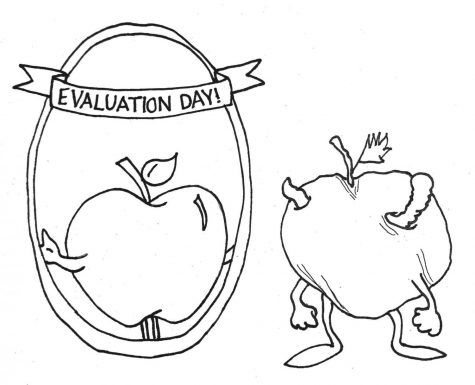Editorial: TUHSD Tenure evaluations are not enough to guarantee quality teaching
March 13, 2020
We have all been there—sat in a class and thought to ourselves, “Why is this teacher here?” Whether they have just shared a story about their sex life, defamed a colleague or lazily handed out a worksheet they copy and pasted from a public Quizlet account, we sometimes doubt the intentions of our teachers and whether they truly want to help us succeed.
A reason some teachers may be slacking at top public schools such as Redwood is an over-simplified tenure evaluation process. Although permanent status, or tenure, solidifies job security, it also has the potential to demotivate educators. To combat this issue, the Tamalpais Union High School District (TUHSD) employs an evaluation process to ensure that teachers who have received tenure remain up-to-par. However, we believe that this infrequent and unsubstantial evaluation process needs significant reform.
At Redwood, tenure is determined through a two-year process of evaluations and check-ins. After receiving permanent status, a teacher is evaluated every other year for 10 years and then every third year from then on. Firing a tenured teacher is nearly impossible, according to the New York Post, but we believe that evaluations and frequent check-ins are important to ensure tenured teachers maintain the quality and maturity displayed before tenure was granted.
The current TUHSD tenure evaluations are not fully reflective of true circumstances in everyday classroom environments. During formal evaluations, a member of the administration ranks a teacher as “satisfactory,” “satisfactory with improvement needed” or “unsatisfactory.” Additionally, anonymous student surveys are administered as part of the evaluation process. The teacher then receives copies of the surveys, plans future goals based on the data and briefly discusses the evaluation with a member of the administration. Although these evaluations can be helpful to improve teaching strategies, they are not as thorough as we would like. If teachers were evaluated more often, it would be easier for administration to notice discrepancies and address issues. 
With a simple three-point rating system, it is difficult for the administration to identify specific areas a teacher could improve on. The evaluation criteria as outlined in the Agreement Between the Governing Board of the Tamalpais Union High School District and the Tamalpais Federation of Teachers includes vague clauses, leaving room for evaluators’ interpretations and allows situations that concern students to slip through the cracks. Additionally, the post-evaluation conversation between the teacher and administration member can be brief and gloss over specific points noticed by the observer or brought up in student surveys. Therefore, we propose more frequent and in-depth evaluations that allow students to express their opinions and experiences in a constructive way that will be heard by administrators and teachers.
Some areas that go unnoticed in evaluations are teachers sharing inappropriate anecdotes about their personal lives, berating students, putting down their fellow colleagues and failing to put in effort outside of class time to help students succeed. These incidents are likely unheard of in formal reviews, and we frequently experience such events, oftentimes from the same teachers. If these cases are reported or witnessed in an evaluation, there is no action taken in terms of mentoring the teacher or giving some sort of consequence.
While anecdotes from a teacher’s personal life can be entertaining and sometimes relatable, they can easily cross the line with stories that include topics such as drunk driving or personal marriage problems. Some teachers also overtly express their frustration by driving students to tears, throwing pencils or flipping desks, which have all occurred according to Redwood students. While we appreciate that teachers feel comfortable in the presence of students and can express their feelings, evaluations fail to notice that this expression is not always executed in a constructive way.
Teacher enthusiasm about the subject should also be made a priority when conducting student surveys and evaluations, as the current process does not accomplish that goal. The student survey could be improved; the majority of questions touch on content taught in class and how the teacher runs the class but only one statement, “Teacher seems to enjoy teaching,” really showcases if the teacher wants to be there. We suggest questions that allow students to answer honestly and uncover more about not only the classroom environment, but also the teacher’s motivation. For example, adding statements such as “your academic goals are fully supported by teacher” or “teacher has made you or other students uncomfortable” would better indicate if a teacher is passionate about their work and upholds an appropriate classroom environment.
We recognize that the TUHSD attracts highly qualified teachers and that the ones we feel are complacent and inappropriate are a minority at Redwood. But just as our teachers give us pop quizzes, we suggest more frequent yet casual evaluations from administrators. We also suggest in-depth student evaluations happen more often to allow students to openly express their opinions. Both of these solutions would not only benefit teachers’ engagement, but students’ success.






